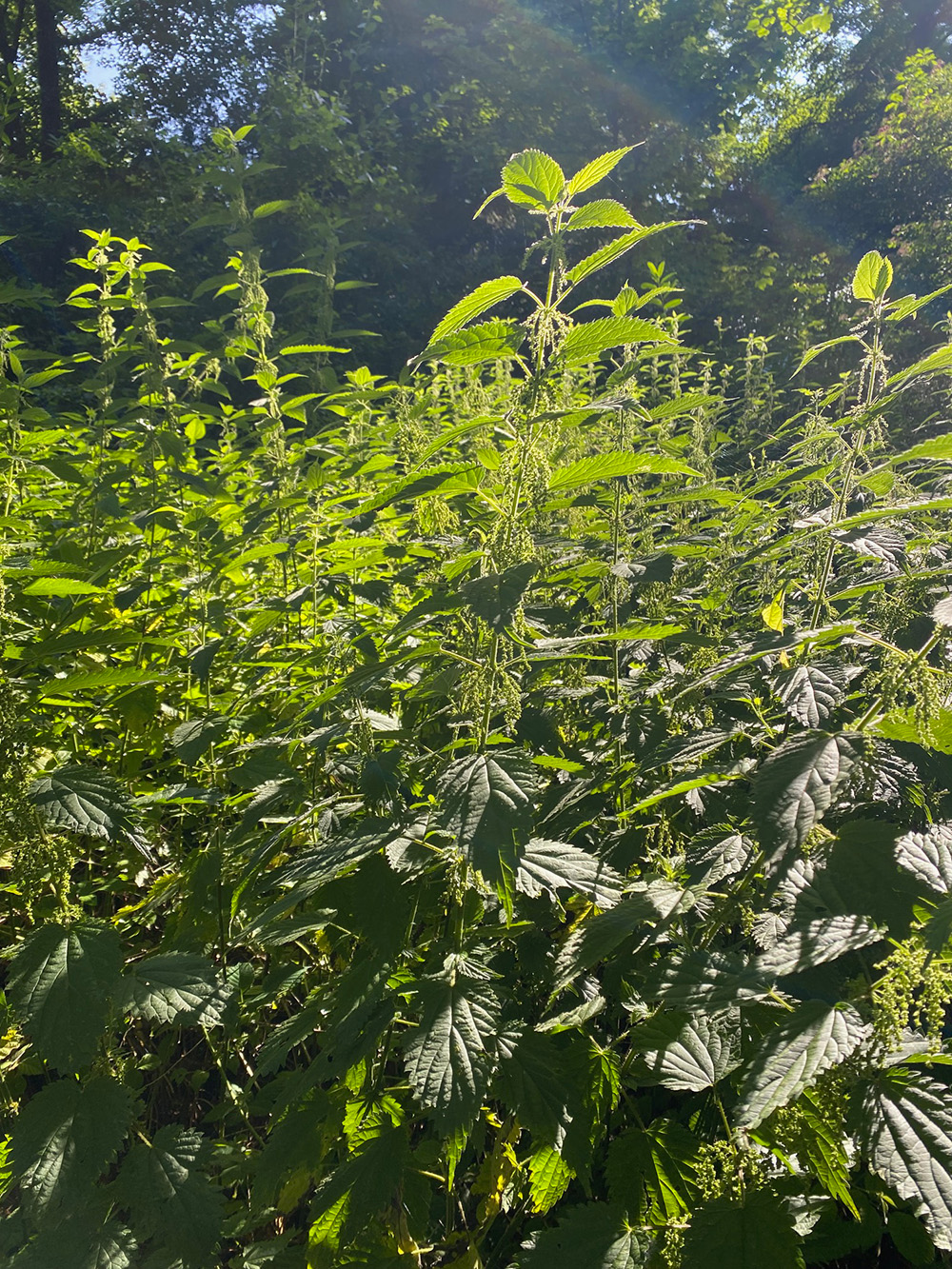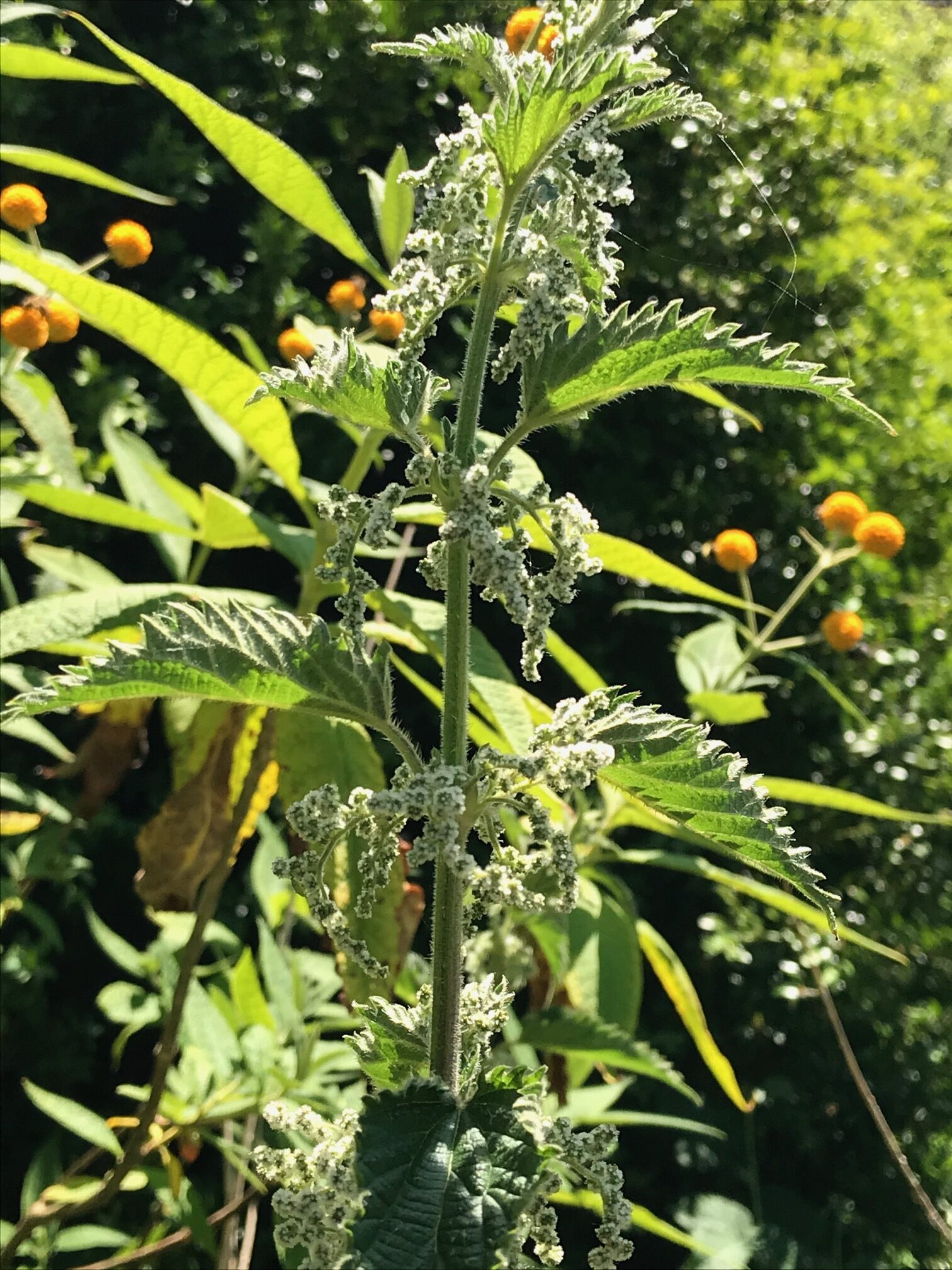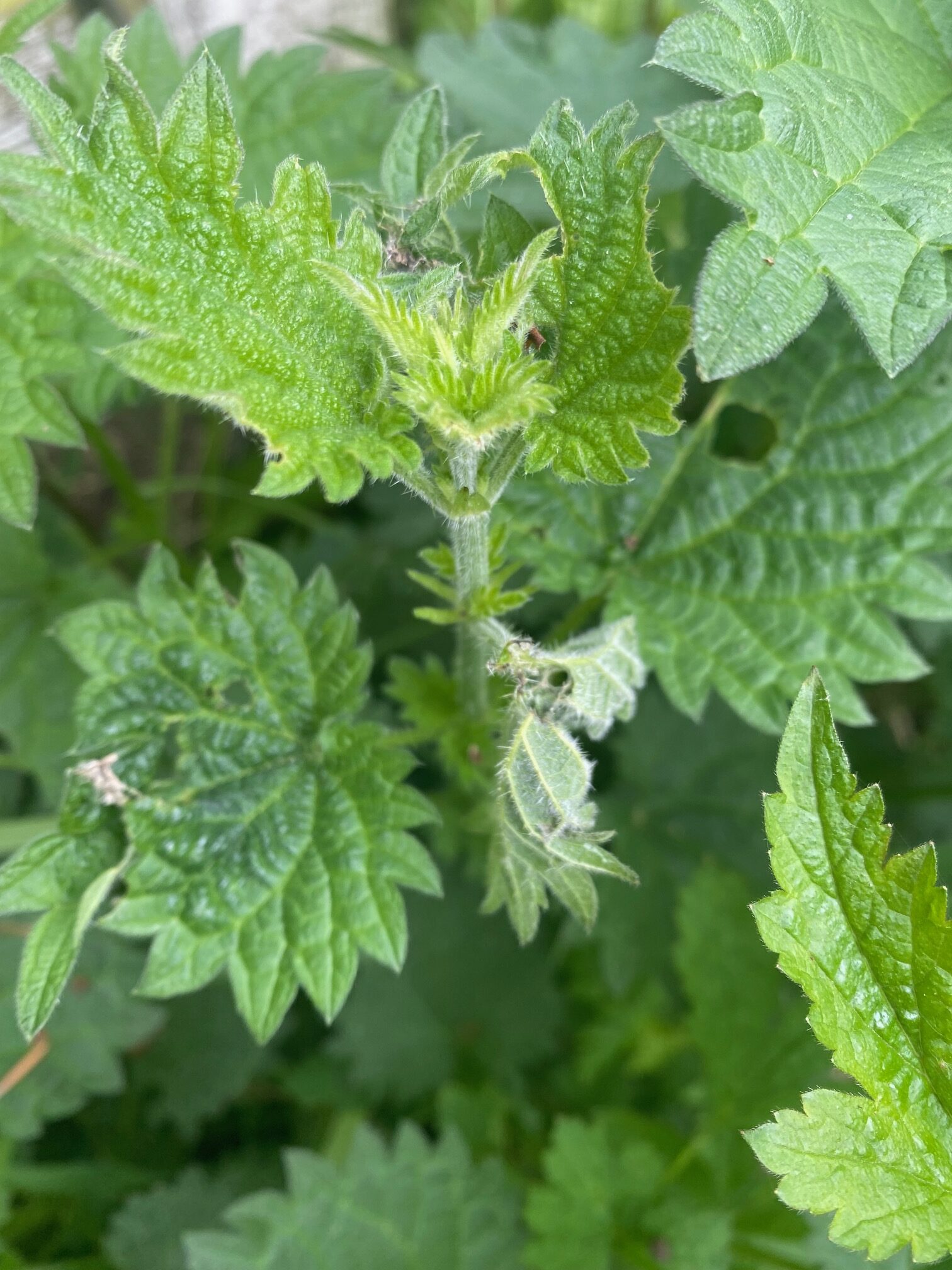
c. Jean Vernon
For some strange reason we have been programmed to loathe stinging nettles, but these plants play a vital role in nature, says Jean Vernon.
If your earliest memories of nettles is falling into the nettle patch or being chased around the playground by nettle wielding classmates, you won’t have a good relationship with these incredible plants.
And that’s a shame, because stinging nettles are important for many, many reasons. So much so we really should regard them as noble nettles.
Baby food

Despite their stinging needles, which incidentally do stop some herbivores eating them, nettles (Urtica dioica) are food for many other creatures, and the stingers actually protect them from predators as they feed. Many of our most dramatic UK butterflies lay their eggs on nettles and the emerging caterpillars feed on the leaves. So, if you love butterflies, you need nettles. They are the host plants for the caterpillars of the peacock, small tortoiseshell, red admiral, comma and painted lady butterflies. The caterpillars aren’t affected by the stingers and feed voraciously on the leaves until they pupate into our beautiful butterflies.
But there’s another important creature that breeds on our garden nettles. The aphids. Greenfly – not usually considered to be one of the gardener’s greatest friends, but aphids are food for all sorts of other creatures that we revere. And they all are part of the intricate web of life in nature. Ladybirds also lay their eggs on our nettle plants – they know that there will be plenty of food there for their larvae, because ladybird larvae (and the adult ladybirds) eat aphids. And the insect eating garden birds feed on the protein rich aphids, caterpillars and other creatures that are part of this micro-ecosystem.
Nutritious nettles

c. Jean Vernon
Nettles are full of nutrients and in spring, when the shoots are young and fresh (don’t pick and eat nettles after they have set seed), they can be incorporated into all sorts of really delicious recipes, often in place of spinach. I love to make nettle and wild garlic pesto, though I am also very careful not to pick nettles that have been chosen by butterflies for their eggs. I tend to pick the nettles growing in the shade as these are less favourable to my butterfly friends.
Nettle soup is delicious and full of vitamins and nutrients. But we mustn’t forget that nettles can also be used to feed our plant and our soil. By adding nettle leaves to the compost heap, or making nettle tea to feed our plants we save money on plant food and improve the soil too.
Don’t pick too much, ensuring that most of the nettle plants remain as part of the food chain.
Super seeds

c. Jean Vernon
But it’s not just nettle leaves that are full of nutrition. Although you should not harvest nettle shoots and leaves when the plants are setting seed, the seeds themselves are edible. The plants put all their energy into making the seeds and that makes them very valuable and nutritious. Nettles are dioecious, that means that they have male plants and female plants and it’s the female plants that bear the seeds once they have been pollinated. Nettles are wind pollinated and that’s why the male plants produce copious amounts of pollen, held on pollen-packed springing anthers. The pollen is picked up on a breeze and transferred to the female plants.
The seeds are held in clusters, on drooping bundles. While the seeds are free of stings, the leaves are close-by so harvest wearing gloves. Harvest the seed clusters from midsummer, choose those at the top of the plant and harvest them when they are green (avoid any which are brown). Don’t over pick, these seeds are also food for the birds and other wildlife.
Rub them through a coarse sieve to release the seeds and add the chaff and stems to your compost.
The seeds have a nutty, earthy taste and can be dried or eaten fresh. There are many nettle seed recipes online.
Safety points

c. Jean Vernon
- Remember always, always be absolutely sure that you can correctly identify any plant you intend to eat.
- Make sure plants have not been sprayed with anything.
- Check for insect eggs, caterpillars and other babies feeding there.
- Always do a tiny test first to ensure you have no allergies or reaction.
- Take care when picking, the fragile and fine hairs are loaded with histamines and formic acid and can cause irritation and painful rash.
- Remember that the brittle hairs of the stings are deactivated on cooking.


